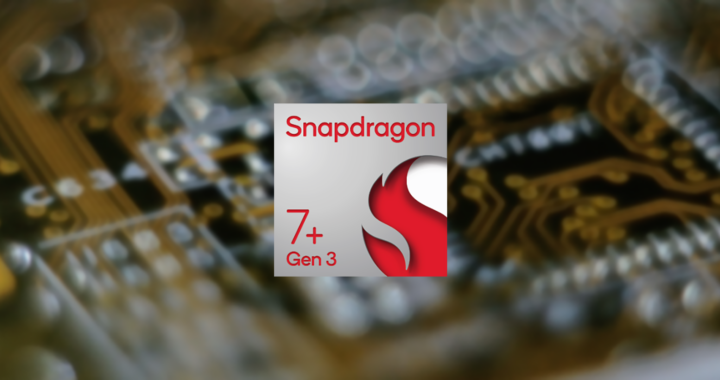Qualcomm positioned its Snapdragon 7+ Gen 3 its most powerful mobile chip platform under the Snapdragon 7 Series line of mid-range system-on-chips when it was introduced on 21 March 2024. It powers several flagship-level mid-range Android smartphones for 2024. These include Realme GT Neo 6E and GT 6T and OnePlus Ace 3V and Nord 4. The naming convention and the fact that it is a newer-generation chip suggest that it demonstrates improvements over the previous Snapdragon 7+ Gen 2 and the base Snapdragon 7 Gen 3 chips. There is some truth to this. There are also some issues. This article weighs the pros and cons of the Snapdragon 7+ Gen 3 through a review of its features and performance.
Features of Snapdragon 7+ Gen 3: New Specifications
This mid-range chip from Qualcomm uses the same 4nm process node from TSMC that was also used in the fabrication of its predecessors and the flagship Snapdragon 8 Series chips from the Snapdragon 8 Gen 1 to the Snapdragon 8 Gen 3. This better process technology enabled Qualcomm to equip it with components found on modern mobile system-on-chips.
At the heart of this chip is an 8-core Kryo CPU based on the big.LITTLE heterogeneous computing architecture from Arm Holdings. The specific processor microarchitecture includes an ARM Cortex X4 prime core clocked at 2.8 GHz, four ARM Cortex A720 performance cores clocked at 2.6 GHz, and three ARM Cortex A520 efficiency cores clocked at 1.9 GHz.
The integrated GPU is a custom Adreno 732 clocked at 950 MHz with about 1459 GFLOPS in FP32. It supports HDR gaming and either 4K or Ultra HD at 60 Hz or Quad HD+ at 144 Hz on-device screen resolution. There is also support for OpenGL ES 3.2, OpenCL 2.0, and Vulkan 1.1 graphics and compute API and HDR10+, HDR10, HLG, and Dolby Vision codecs.
Qualcomm also brings its Qualcomm AI Engine to this mid-range chip. This AI engine includes the Kryo CPU, Adreno GPU, and the dedicated Qualcomm Hexagon NPU with scalar, vector, and tensor accelerators. There is also the separate and dedicated Sensing Hub designed for handling and accelerating minuscule sensor-based AI workloads and inferences.
The wireless technologies also marked an improvement from its predecessor. It still features both Sub-6 GHz and mmWave 5G technologies in standalone and non-standalone modes but now uses the better Qualcomm FastConnect 7800 to bring in Wi-Fi 7 and Bluetooth 5.4 with support for the Snapdragon Sound Technology Suite for adaptive and lossless wireless audio.
Performance of Snapdragon 7+ Gen 3: Pros and Cons
1. General Processing Performance
The Realme GT Neo 6 SE powered by this chip got a 391480 score in CPU benchmark test using AnTuTu 10. The scores slightly differ across different devices but the average is around 368725. This is still about 8.22 percent higher than the 339608 score of the 7+ Gen 2 and about 20.16 percent higher than the 301184 score of the older Snapdragon 8 Gen 1 flagship.
It also scored 1913 and 5098 in single-core and multi-core tests in GeekBench 6. This single-core score is about 11 percent higher than the 7+ Gen 2, about 50 percent higher than the base 7 Gen 3, and about 14 percent higher than the 8 Gen 1. Take note that the specific multi-core score is also about 24 percent higher than the 2022 older flagship Snapdragon 8 Gen 1.
The almost flagship-level CPU performance is definitely one of the advantages of the Snapdragon 7+ Gen 3. This mid-range chip provides better general processing capabilities than the flagships of 2020 to 2022. Hence, because of its particular market positioning, it also outcompetes other same-generation mid-range mobile chips from MediaTek, Huawei, and Samsung.
2. Graphics Processing Performance
Results from 3DMark Wildlife Performance that assets its graphic performance in Vulkan showed a score of 10829 at 34 frames per second. This is about 46.85 percent higher than the 6718 score of the 8 Gen 1. The AnTuTu 10 GPU scores across different devices have an average of 484299. This is about 7.58 percent higher than the same older Snapdragon flagship.
Its 3DMark and AnTuTu 10 scores are still about 16.19 percent and 22.75 percent lower than the Snapdragon 8 Gen 2. However, when compared to mid-range chips like the MediaTek Dimensity 9300, which was released in November 2023, and the flagship Google Tensor G3, which was released in October 2023, this mid-range Snapdragon chip still performs better.
The graphics processing capabilities of the Snapdragon 7+ Gen 3 come from its custom Adreno 732 and the co-processing capabilities of the Qualcomm Hexagon AI accelerator. The custom Adreno integrated GPU tends to outperform same-generation standard Arm Mali GPUs and the AI-driven upscaling improves frame rates and offloads some computational workloads.
